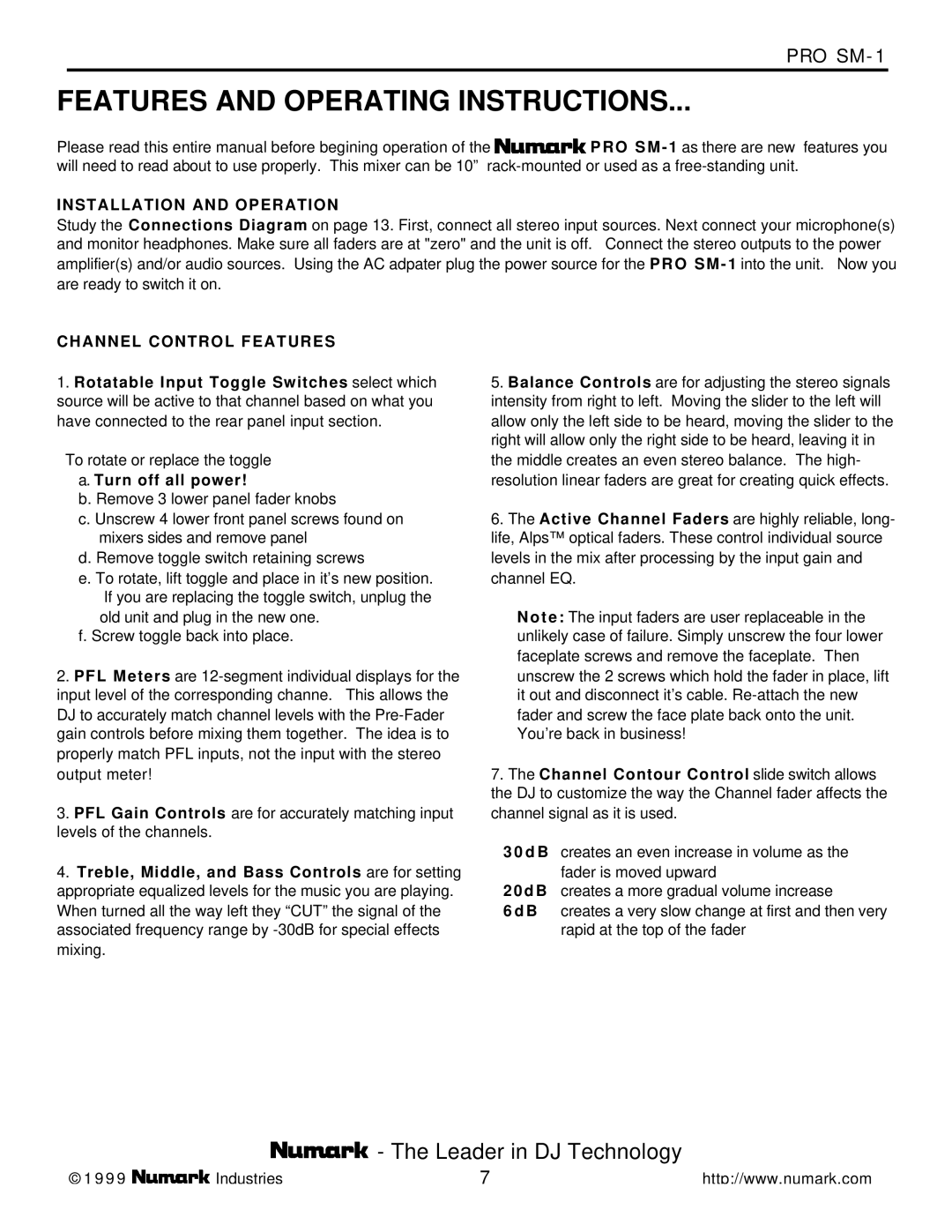
PRO SM-1
FEATURES AND OPERATING INSTRUCTIONS...
Please read this entire manual before begining operation of the ![]() P R O S M - 1 as there are new features you will need to read about to use properly. This mixer can be 10”
P R O S M - 1 as there are new features you will need to read about to use properly. This mixer can be 10”
INSTALLATION AND OPERATION
Study the Connections Diagram on page 13. First, connect all stereo input sources. Next connect your microphone(s) and monitor headphones. Make sure all faders are at "zero" and the unit is off. Connect the stereo outputs to the power amplifier(s) and/or audio sources. Using the AC adpater plug the power source for the P R O S M - 1 into the unit. Now you are ready to switch it on.
CHANNEL CONTROL FEATURES
1.Rotatable Input Toggle Switches select which source will be active to that channel based on what you have connected to the rear panel input section.
To rotate or replace the toggle a. Turn off all power!
b. Remove 3 lower panel fader knobs
c. Unscrew 4 lower front panel screws found on mixers sides and remove panel
d. Remove toggle switch retaining screws
e. To rotate, lift toggle and place in it’s new position. If you are replacing the toggle switch, unplug the old unit and plug in the new one.
f. Screw toggle back into place.
2.PFL Meters are
3.PFL Gain Controls are for accurately matching input levels of the channels.
4.Treble, Middle, and Bass Controls are for setting appropriate equalized levels for the music you are playing. When turned all the way left they “CUT” the signal of the associated frequency range by
5.Balance Controls are for adjusting the stereo signals intensity from right to left. Moving the slider to the left will allow only the left side to be heard, moving the slider to the right will allow only the right side to be heard, leaving it in the middle creates an even stereo balance. The high- resolution linear faders are great for creating quick effects.
6.The Active Channel Faders are highly reliable, long- life, Alps™ optical faders. These control individual source levels in the mix after processing by the input gain and channel EQ.
N o t e : The input faders are user replaceable in the unlikely case of failure. Simply unscrew the four lower faceplate screws and remove the faceplate. Then unscrew the 2 screws which hold the fader in place, lift it out and disconnect it’s cable.
7.The Channel Contour Control slide switch allows the DJ to customize the way the Channel fader affects the channel signal as it is used.
3 0 d B creates an even increase in volume as the fader is moved upward
2 0 d B creates a more gradual volume increase
6 d B creates a very slow change at first and then very rapid at the top of the fader
![]() - The Leader in DJ Technology
- The Leader in DJ Technology
©1999 | Industries | 7 | http://www.numark.com |
